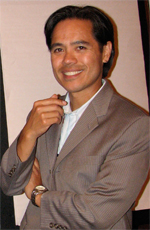The examples and perspective in this article deal primarily with the United States and Canada and do not represent a worldwide view of the subject.(May 2022) |

This is a list of notable writers who are Indigenous peoples of the Americas .
Contents
This list includes authors who are Alaskan Native, American Indian, First Nations, Inuit, Métis, and Indigenous peoples of Mexico, the Caribbean, Central America, and South America, as defined by the citizens of these Indigenous nations and tribes.
While Indigenous identity can at times be complex, inclusion in this list is based upon reliably-sourced citizenship in an Indigenous nation, based upon the legal definitions of, and recognition by, the relevant Indigenous community claimed by the individual. They must be documented as being claimed by that community. Writers such as Forrest Carter, [2] [3] Ward Churchill, [4] [5] [6] Jamake Highwater, [7] [8] [9] Joseph Boyden [10] [11] and Grey Owl, [2] [12] [13] whose claims of Indigenous American descent have been factually disproved through genealogical research, are not included in this list.

